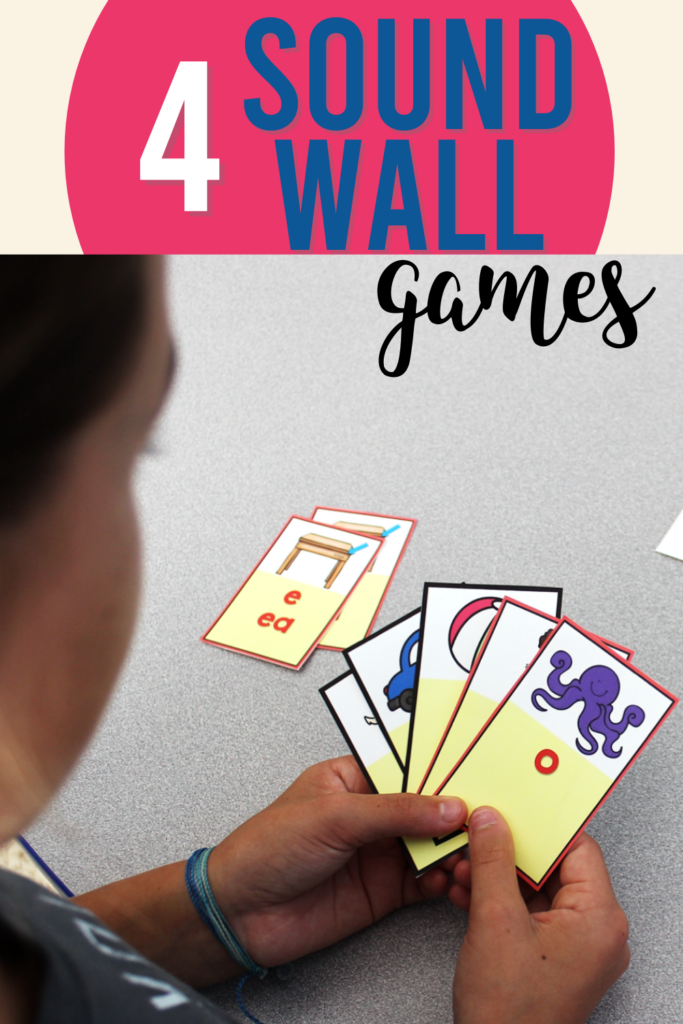
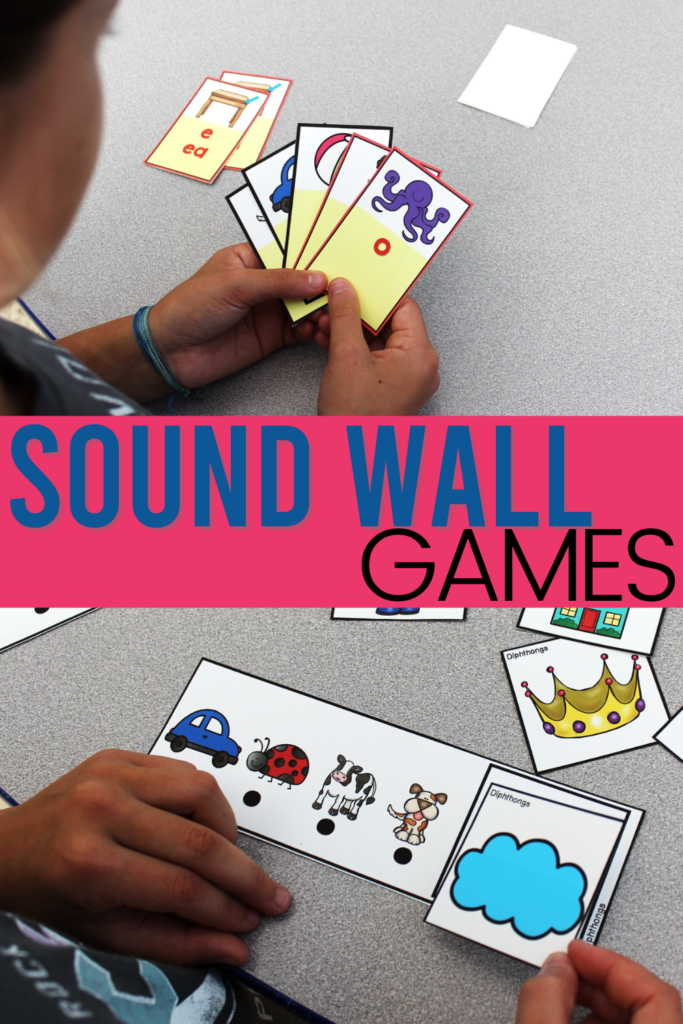
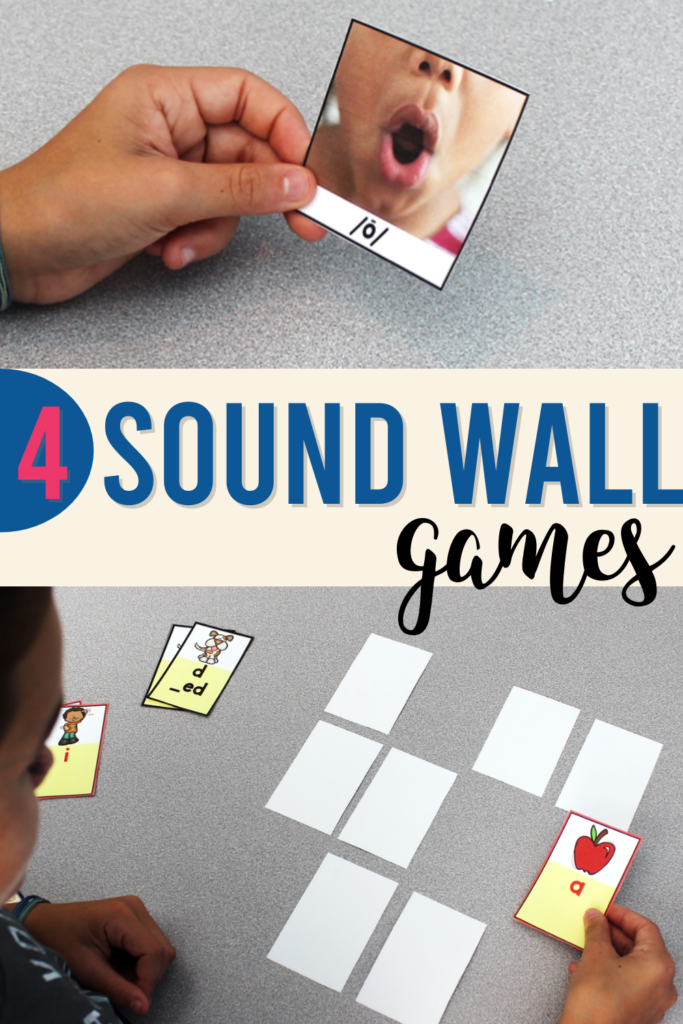
In this post I’m sharing low-prep, engaging sound wall games to help students develop phonemic awareness, including my own Mystery Words resource ideal for kindergarten, first and second grade students. These games were designed to compliment my Sound Wall Resource, but can be used by anyone!
So you’ve got yourself a sound wall- Hooray! It looks great up on the wall and you’re beginning to explicitly teach your students the sounds one by one! Double-Hooray!
These are great things! But in order for your sound wall to really become a powerful tool that will help your students read, spell, and write more confidently they must have LOTS of opportunities to interact with it.
In my last blog post, I shared details about the Sound Wall Teacher’s Guide that provides you with explicit and systematic lesson plans and student activities for introducing and using a sound wall.
These lessons and activities are a wonderful way to help you establish instructional routines for your sound wall. But research tells us that quality instruction must also include cumulative practice. This means once a student moves forward with a new concept, they must continue to review the skills they’ve already learned.
One highly engaging way to provide students the review they need for mastery is through games! Today I am excited to share with you 4 sound wall games students can play to develop their phonemic awareness skills.
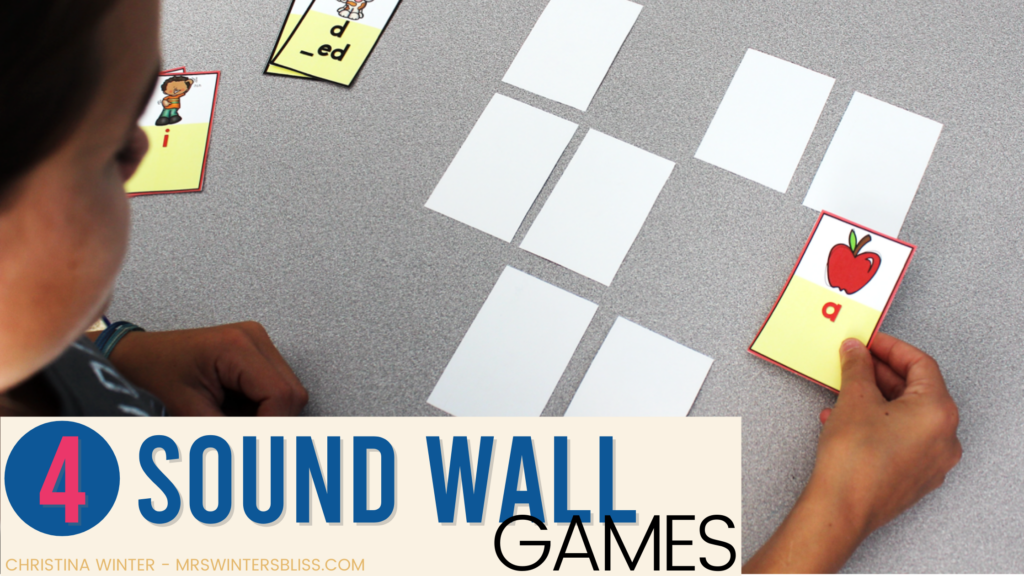
These games follow the essential, evidence-based principles of quality instruction. They take what we know about how students learn to read and put it into practice.
The games offer students practice that is explicit, engaging, and multi-sensory. They also provide the cumulative review we know they need for mastery. These sound wall games require minimal prep from you and your students will love them!
4 Games to Play with a Sound Wall
Go Fish
The classic game of Go Fish is a great way for students to practice phonemic awareness. Simply print two sets of the small sound cards from the Sound Wall Resource. Put students in small groups and have them deal five cards out to each player. Leave the remaining cards for the draw pile.

If player one has the O card, they would ask their partner, “Do you have the card that makes the /o/ sound?” If they do, they hand it over and player one makes a match, if not, player one draws a sound card from the pile and it is now the next person’s turn to ask for a match!
Tip: To get the cards the right size, I printed the smaller sound spelling cards (2 on one page) four pages on 1 page. You can do that in your printer settings, select print multiple pages. It looks like this once printed!
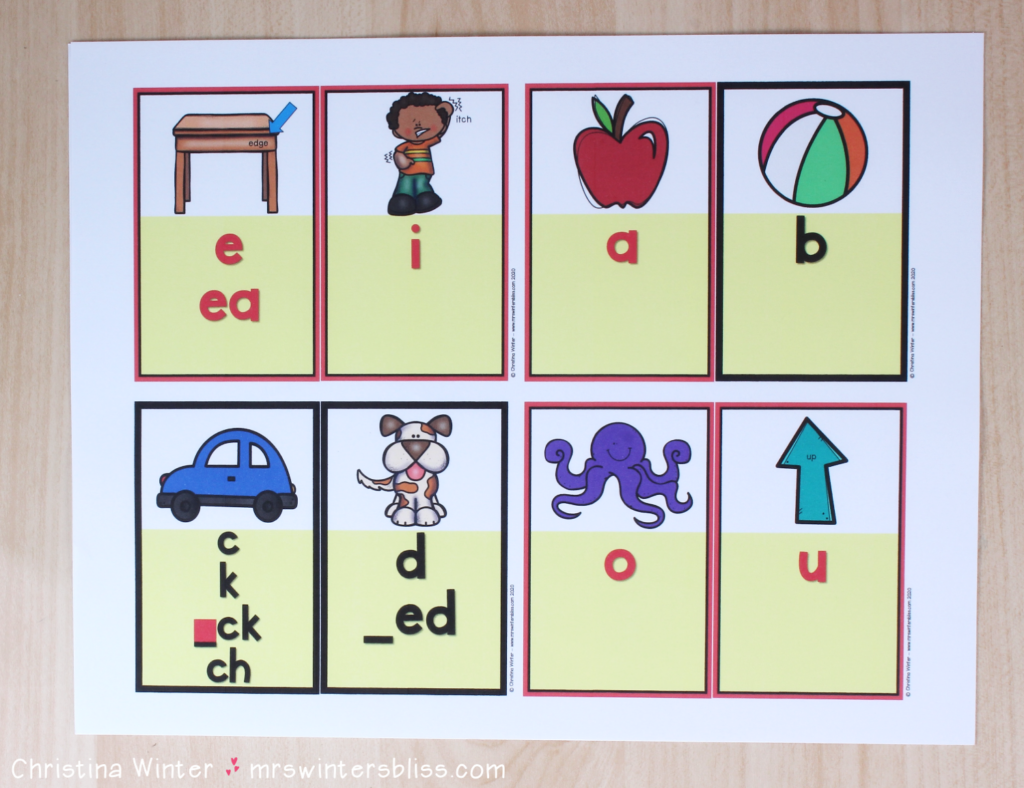
Memory
Using the same double set of sound cards used in Go-Fish, students can also play the classic game of Memory. They simply shuffle the cards, place them face down and take turns flipping the cards, trying to make a match! When they make a match they can say (for instance) “the sound /d/ is represented by the letter D.”
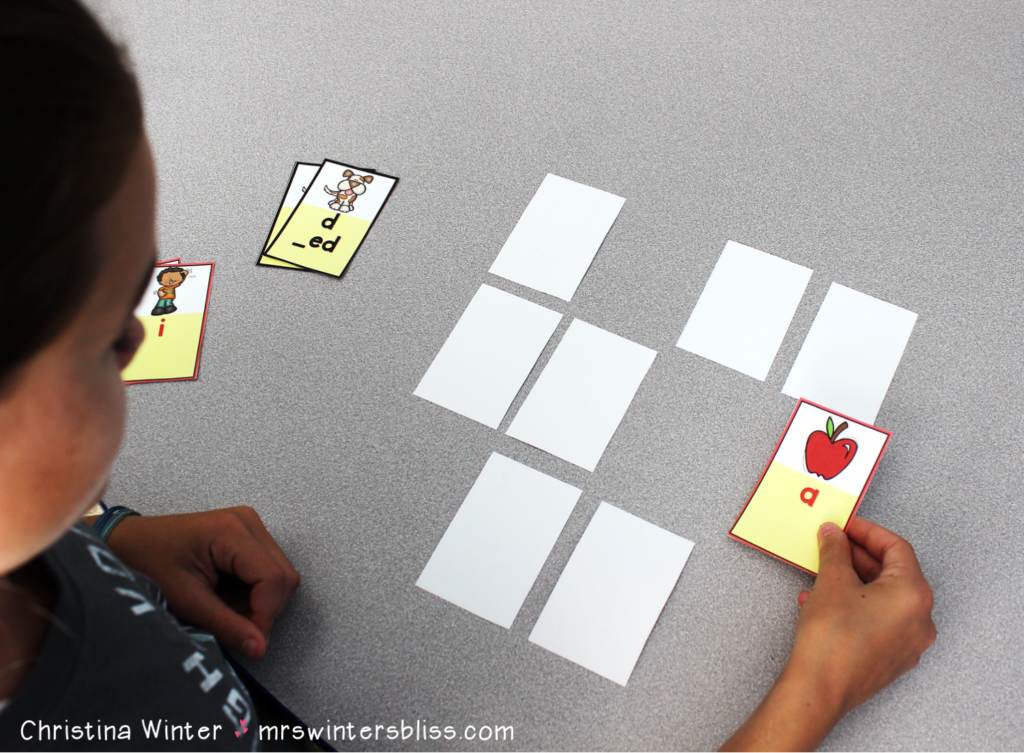
Articulation Gestures
Think of this game like charades but with sounds! All you need is a pile of mouth articulation cards. You can use the mouth photos included in the sound wall resource or create your own by taking photos of your students forming the sounds with their mouths.
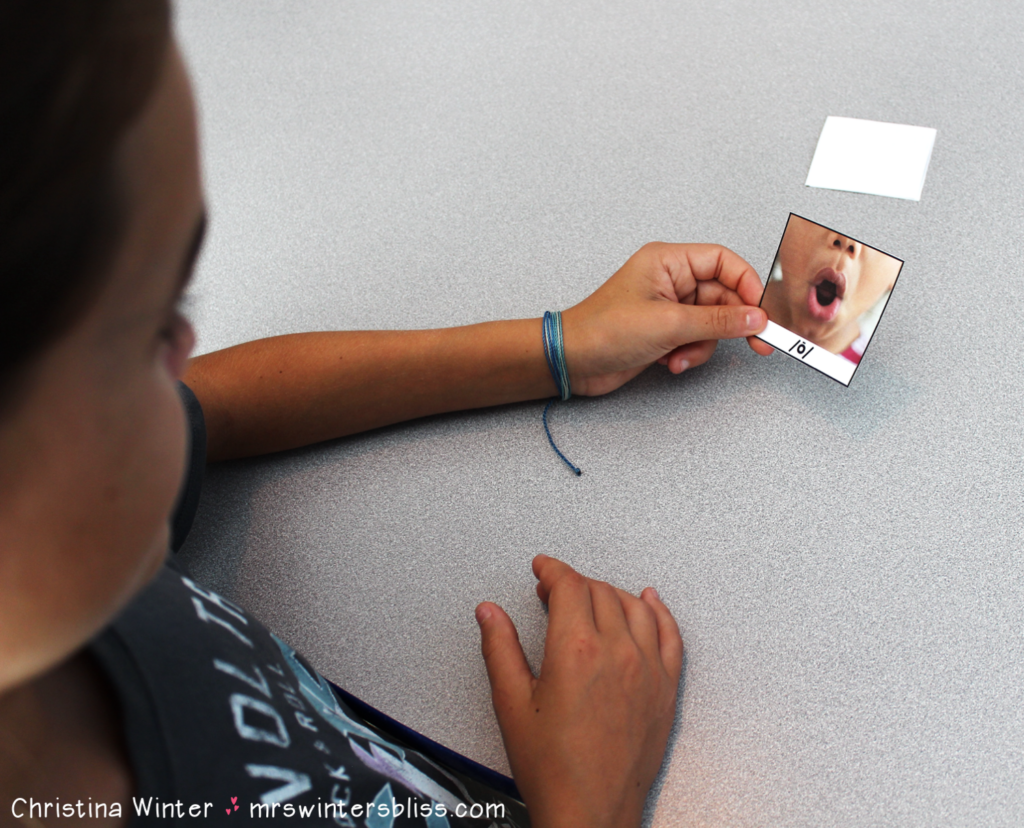
To play, one student picks a mouth articulation card from the pile and creates that gesture with their own mouth. The other student/s then guess what sound they are forming! Encourage your students to reference the sound wall for help!
Mystery Word Games
The Mystery Words resource is a game I created to help your students develop their phonemic awareness skills. In the game, students identify and tap the beginning sound of each picture and then blend those sounds together to form the Mystery Word!
Once they’ve identified the Mystery Word they confirm they are correct by finding a picture of the word and placing it in the empty box. If they were able to match the word with one of the pictures they know they got it correct! This provides students with immediate feedback and helps to keep them engaged and motivated!
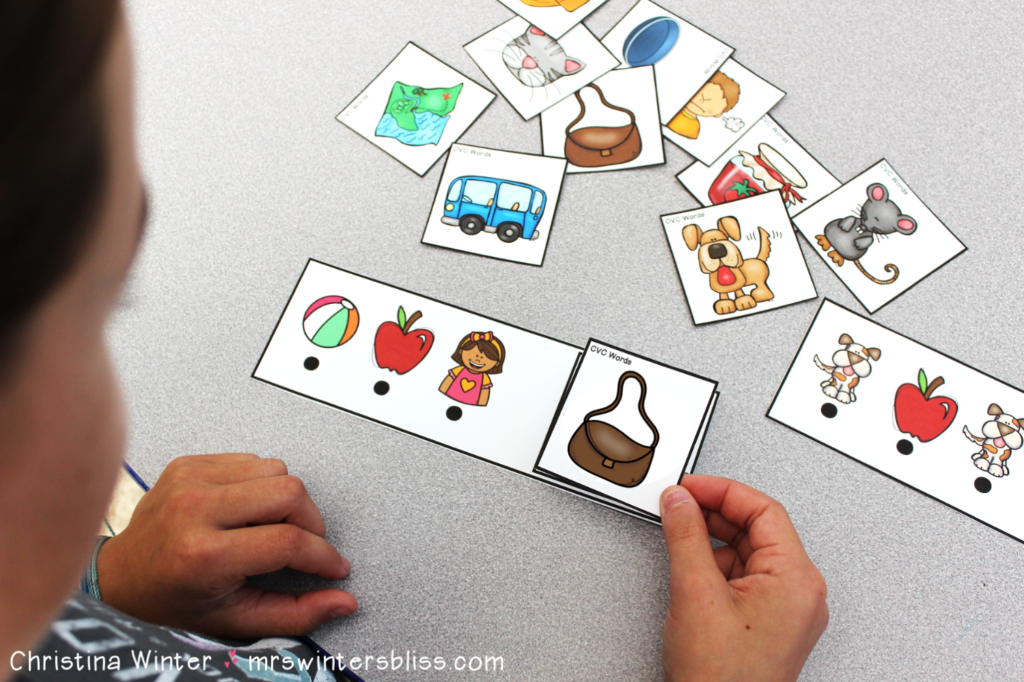
Each game mat focuses on one specific phonics skill. The skills include blends, digraphs, long vowels, CVCe, R-controlled, and diphthongs. You can use one entire page for your explicit instruction and guided practice for each skill.
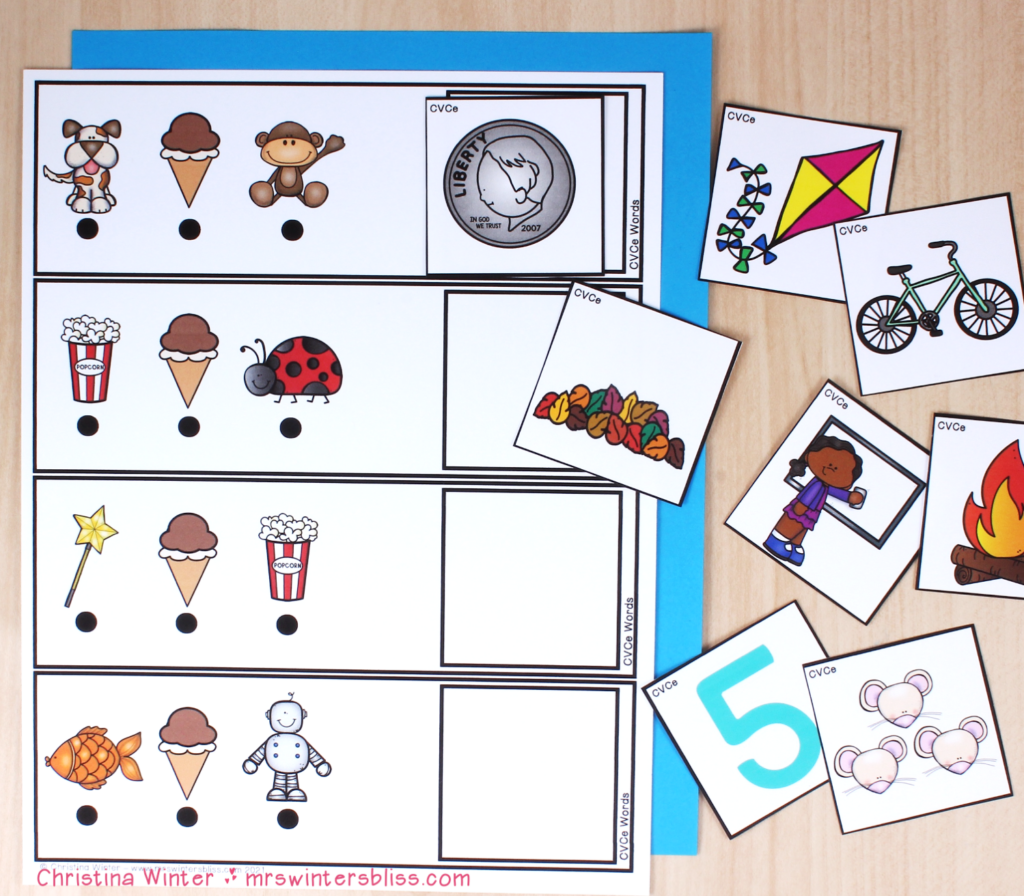
Once students have received your direct instruction and are ready for independent practice, simply cut the pages into strips, mix them up and use them as a center activity. This is a great way to give students the cumulative review we know they need for mastery.
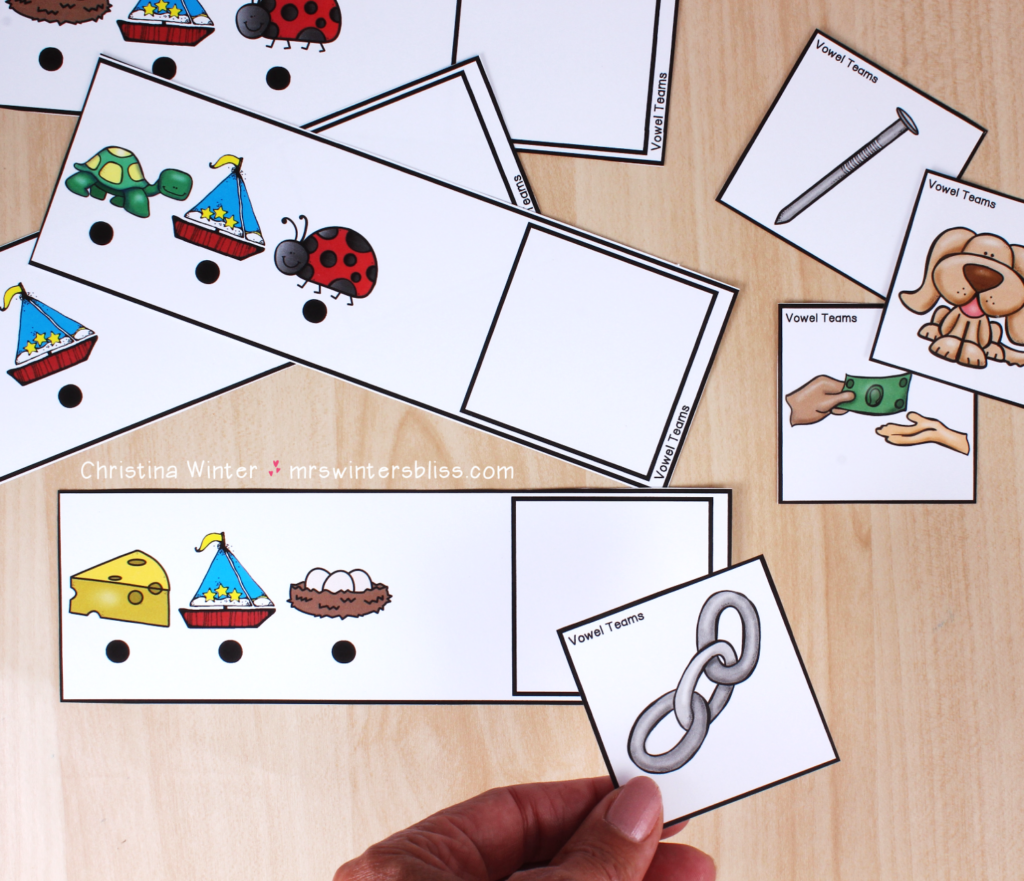
The resource includes picture sound charts that can be used if you don’t have a sound wall in your classroom.

While this resource was designed to be a phonemic awareness task, not a writing task, I did include a recording sheet where students can write the mystery word if you’d like them to do so.
Finally, you’ll love this Mystery Word Game Resource because it is NO PREP for you! Simply make copies of the game mats for your direct instruction and guided practice! Cut the mats into strips and you’ve got yourself an engaging, literacy center that will last all year!
I hope the games I’ve shared today will help to keep your students interacting with the sound wall and practicing the important skills you have taught them in an engaging way! Looking for more ways to get students excited about the sound wall? Take a peek at this post where you’ll find 5 More Ways to Use a Sound Wall and free downloadable lyrics to a sound wall rap you can teach your students!
What are your favorite ways to get students engaging and interacting with the sound wall? I love to learn and hear about all the amazing things you do in your classroom, so share them below!
-shop this post-
-
Sale Product on sale
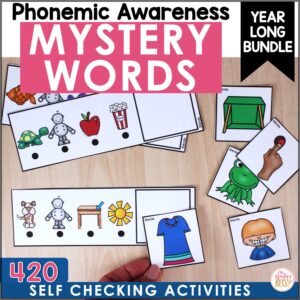 Mystery Words – Phonemic Awareness Games – BUNDLEEarn 0 Reward Points
Mystery Words – Phonemic Awareness Games – BUNDLEEarn 0 Reward Points$14.00Original price was: $14.00.$11.20Current price is: $11.20.Rated 5.00 out of 5 based on 1 customer rating -
Sale Product on sale
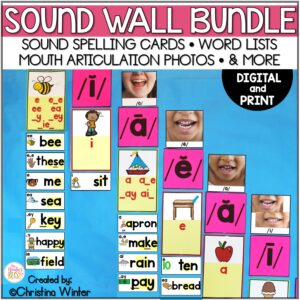 Phoneme Sound Wall with Mouth Articulation Photos – science of reading alignedEarn 0 Reward Points
Phoneme Sound Wall with Mouth Articulation Photos – science of reading alignedEarn 0 Reward Points$31.50Original price was: $31.50.$28.00Current price is: $28.00.Rated 5.00 out of 5 based on 21 customer ratings
–PIN for LATER–










